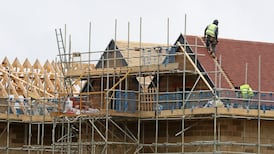The number of people in Ireland suffering “enforced deprivation” has risen sharply on the back of rising energy and food costs, according to the Central Statistics Office (CSO).
The agency’s latest Survey of Income and Living Conditions suggested the proportion of people deprived of certain basic goods and services rose from 13.8 per cent last year to 17.1 per cent in 2022.
This equates to approximately 872,000 people.
Enforced deprivation is defined as a household which experiences two or more “deprivation items”, such as being unable to heat their home, being unable to afford a roast once a week, or being unable to afford a warm, waterproof jacket.
READ MORE
The survey suggested the number of people who are unable to afford to keep the home adequately heated more than doubled in the past 12 months, from 3.2 per cent in 2021 to 7.4 per cent.
The groups most likely to be experiencing deprivation were those living in one-adult households with children under 18 (45.4 per cent); those who are unemployed (45 per cent); those who are unable to work due to long-standing health problems (42.7 per cent), and those living in rented or rent-free accommodation (34.1 per cent).
[ Electricity bills likely to remain high despite falling wholesale pricesOpens in new window ]
Conversely, the people least likely to experience deprivation were the employed (12.4 per cent) and the retired (10.5 per cent).
Reflecting the squeeze on real incomes, the CSO said all socio-demographic groups experienced an increase in enforced deprivation rates year-on-year in 2022.
Of those experiencing deprivation, the most common type was inability to afford to replace worn out furniture (83.3 per cent), followed by inability to afford brand new clothes (54.1 per cent) and being unable to have family or friends for a drink or a meal once a month (52.1 per cent).
[ Average Dublin advertised rents rise to €2,258, up 14.3%, amid ‘extreme shortage’Opens in new window ]
More generally, the survey found that households with at least some difficulty in making ends meet increased from 42 per cent in 2021 to over 49 per cent this year.
While households in mortgage or rent arrears decreased from 11 per cent to 8.3 per cent, those with utility bill arrears increased from 7 per cent to 9.2 per cent in 2022, the report said.
The report also found that the number of people unable to afford a morning, afternoon or evening out in the last fortnight rose from 3.8 per cent in 2021 to 9.3 per cent in 2022.














